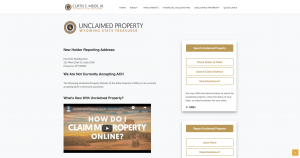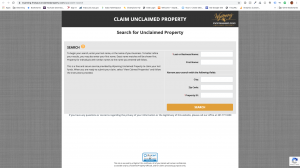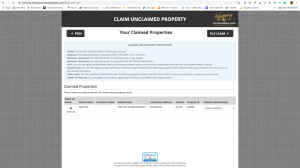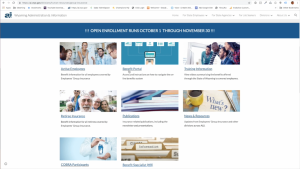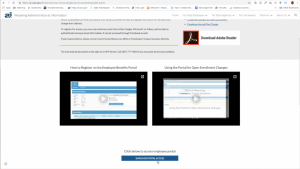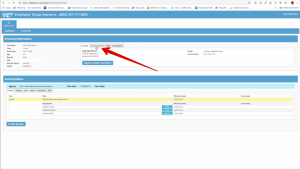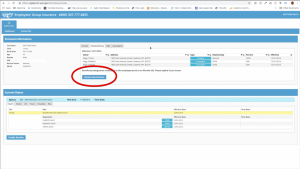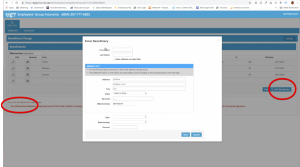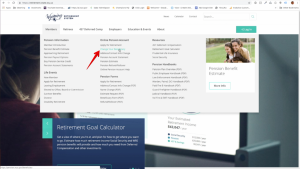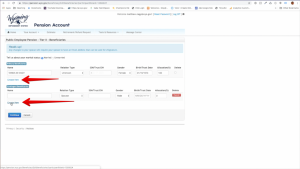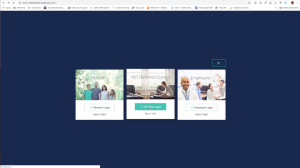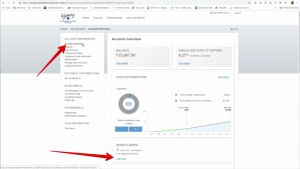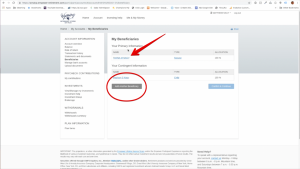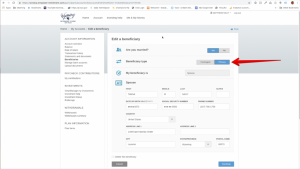The below post is taken from the Video Blog, the Subject Matter Minute. If it’s a little hard to read, it’s because it’s taken from the spoken word. You can view the episode on YouTube if you would like. Find it here: Episode #48 -Reasonable Accommodation.
If YouTube is blocked for you or your agency, you can scroll to the bottom of this post to view it from Google Drive. (I would prefer you view on YouTube, so I know how many people have watched)
You can also listen to an audio version.
Hello and welcome to the Subject Matter Minute, I’m Matt Nagy, thanks for joining me!
Today’s show is going to be a bit long, so I’m going to get right into it.
Today we are going to talk about Accommodation. (music)
Before we get started, I’d like to thank Russell Webb of HRD for taking the time to help me understand the definitions and processes of accommodation at the state. Thanks, Russ.
There are two areas protected under the law that accommodation can be requested for… disability and religion. Under Title I of the Americans with Disabilities Act (ADA), a reasonable accommodation is a modification or adjustment to a job, the work environment, or the way things are usually done during the hiring process. These modifications enable an individual with a disability to have an equal opportunity to get a job and successfully perform their job tasks to the same extent as people without disabilities.
The law also requires an employer to reasonably accommodate an employee’s religious beliefs or practices. This means an employer may be required to make reasonable adjustments to the work environment to allow an employee to practice his or her religion.
For both disability and religion, An employer does not have to provide a reasonable accommodation if it imposes an “undue hardship.” Undue hardship is defined as an action requiring significant difficulty or expense when considered in light of factors such as an employer’s size, financial resources, and the nature and structure of its operation. So that will vary by agency…
An employer generally does not have to provide a reasonable accommodation unless an individual has asked for one. The employer can start the conversation if there is a safety issue. Also, if a supervisor believes that a medical condition is causing a performance or conduct problem, he or she may ask the employee how to solve the problem and if the employee needs reasonable accommodation. However, if the employee says that they do not need or want an accommodation, the discussion should stop there.
So the process generally begins with an employee requesting an accommodation. The supervisor then has 30 days to follow up with the employee. If management fails to follow up within this time, they are said to have “refused accommodation,” and this opens the state up to liability. After management follows up, the employee then has 30 days to follow up. If the employee fails to do so, they forfeit their right to accommodation. However, they can start the process over by again requesting accommodation.
The key is that the employee must be able to perform the “essential functions of the job,” as they are written in the job description. This means that if a “non-essential” function is an issue, those functions could be reassigned to another employee. This is a type of accommodation. However, essential functions cannot be reassigned. This is where other types of accommodation come into play.
The State doesn’t necessarily have to provide the preferred accommodation if there is something else that allows for the performance of the job’s essential functions and meets the needs. There are generally 4 things that need to be taken into consideration when determining accommodation. Cost, function, safety, and scheduling. How much might this cost? Are the essential functions being met? Are there any safety concerns? Does the schedule change work for everyone?
Also, bona fide seniority systems and collective bargaining agreements can supersede requests for schedule changes. Also, employers are not required to displace another employee to provide accommodation. For example, if there is no room on the other shift that doesn’t work Saturdays the employer is not required to force someone on that shift to trade shifts, nor is the employer required to create a job, there must be an existing opening. Again, employers don’t have to provide the requested accommodation, just something that meets the needs and enables the employee to complete essential functions of the job.
The agreed-upon accommodation is for the length of employment unless stated otherwise. For instance, a temporary one might be a short-term medical condition.
I mentioned in the beginning that there are 2 areas that accommodation can be requested for. Disability and religion. Many religious accommodations are about scheduling. Requesting to not work on a day of the week that conflicts with certain religious activities. Naturally, we think, ya know… Sunday. But it could be any day for different religions. And it could be temporary as well. A good example is Ramadan. This is a situation where scheduling changes could make it easier for someone to get their work done while fasting. Other reasons for religious accommodation would be for clothing or displaying religious items in the office.
As an example, an employee at the State said he should not have to wear a hard hat while at work because his religious beliefs required him to wear a head covering. The covering he chose to wear prevented him from wearing a hard hat. After some research and engaging in the interactive process it was discovered this was a preferred head covering by the employee and others were available to him. He eventually agreed to wear a different style of head covering while at work that permitted him to also wear a hard hat.
Remember… safety trumps all else. You will not get an accommodation if there is a safety issue involved.
I think it’s fairly standard for us to think that providing an accommodation is going to be cost-prohibitive. Turns out this is usually not true.
The typical cost of accommodation is $500
A 2020 survey report by the Department of Labor’s Office of Disability Employment Policy showed that 56% of workplace accommodations for employees cost absolutely nothing to execute. The remaining ones typically cost just $500.
I’m going to finish this out with some examples.
Example 1
Situation: An office employee with limitations in using her hands found it difficult to operate the computer mouse.
Solution: The employer arranged for a foot-operated computer mouse, footpad, and speech-to-text software. The accommodation was successful.
Cost of Accommodation: $300
Example 2
Situation: An office worker with cold sensitivity was experiencing pain in the head and neck because of the office temperature.
Solution: The employer switched off an air conditioning vent in the employee’s work area (cubicle) and diffused another vent away from the cubicle. The employee was also provided with a heated scarf.
Cost of Accommodation: $115
Example 3
Situation: A professor with a mental health problem was finding it hard to concentrate at the workplace. The professor operated in a shared office space, and the cause of his problem was frequent interruptions.
Solution: A private office space was provided to the professor.
Cost of Accommodation: Zero
Example 4
Situation: A county government employee with a kidney disorder requested to work remotely because of the need to take frequent breaks and difficulty in commuting.
Solution: The employer permitted the employee to work from home and provided computer equipment to set up at home.
Cost of Accommodation: Zero (because the same equipment was provided to all employees)
Example 5
Situation: An employee working in a lab environment was finding it hard to communicate with colleagues because of a progressive hearing loss.
Solution: Co-workers were asked to first ensure he was looking at them before they began to speak. In addition, every verbal communication was followed by written email communication. Everyone benefited from this accommodation because they had a written record they could refer to at any time.
Cost of Accommodation: Zero
Alright… I’m outta here! I hope this is useful to those supervisors who need to deal with this situation and those employees who need accommodation. See ya next month on the Subject Matter Minute.


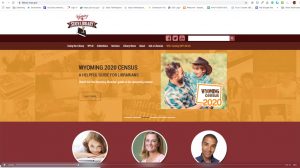
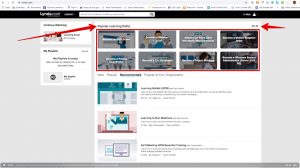
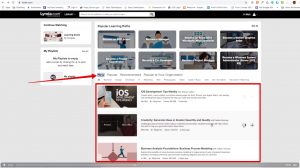

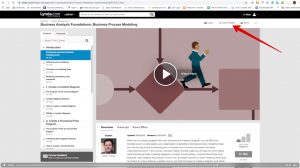


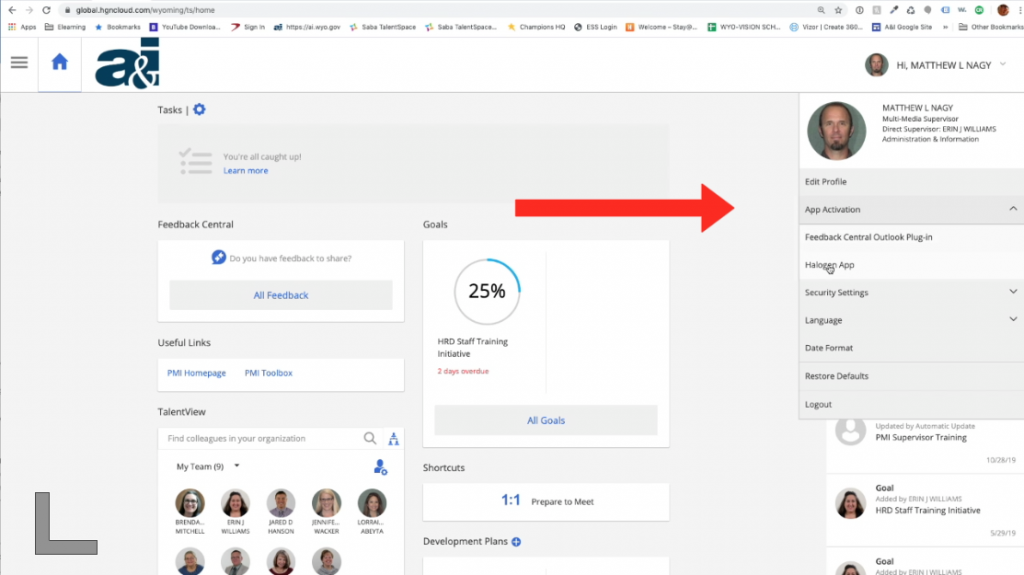
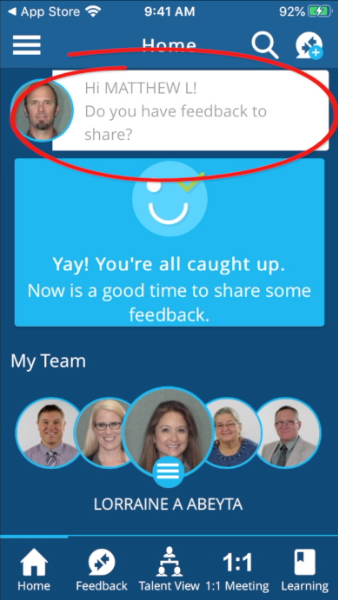
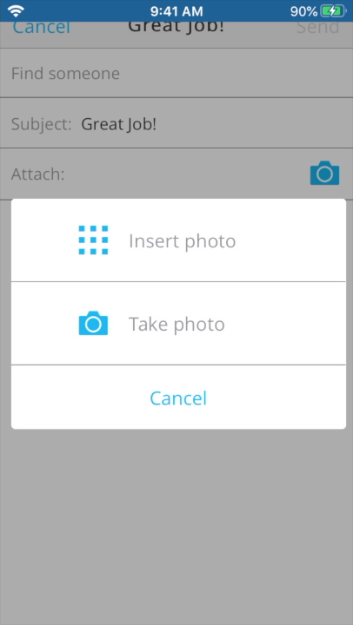 Hold up! Let’s go back a second. I recorded this and then realized there’s a very cool feature within the mobile app that you cannot do on your desktop. You can attach photos! So when you’re in feedback, you see the little photo or a camera icon… click on that and you can insert a photo or take a photo. So if you are giving feedback on something at the time that is right in front of your face, you can take a photo. Or if you previously had a photo you can go insert photo. Go into your photos on your camera… yeah better not, my wife had some pictures of her being very sick… Or take a photo. Allow it to use your camera, and look that’s me recording my phone.
Hold up! Let’s go back a second. I recorded this and then realized there’s a very cool feature within the mobile app that you cannot do on your desktop. You can attach photos! So when you’re in feedback, you see the little photo or a camera icon… click on that and you can insert a photo or take a photo. So if you are giving feedback on something at the time that is right in front of your face, you can take a photo. Or if you previously had a photo you can go insert photo. Go into your photos on your camera… yeah better not, my wife had some pictures of her being very sick… Or take a photo. Allow it to use your camera, and look that’s me recording my phone.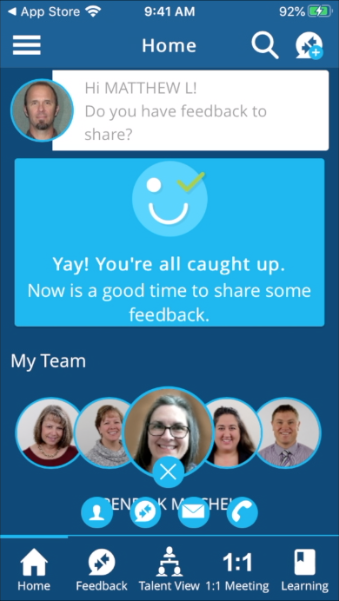 Another way is you can see on the home page the “my team” at the bottom. You can scroll through your people, and then either click on their face or click on the little three bars below their face and that’ll bring up icons. You can see the feedback icon is the second from the left if you want to send feedback to that person, or if you click on their face it brings up their face in a larger format and gives you some icons as well. You can send email to them, you can send feedback, and unfortunately you can’t call through the system right now. The telephone icon is grayed out. But that’s another way you can send feedback to your people right away.
Another way is you can see on the home page the “my team” at the bottom. You can scroll through your people, and then either click on their face or click on the little three bars below their face and that’ll bring up icons. You can see the feedback icon is the second from the left if you want to send feedback to that person, or if you click on their face it brings up their face in a larger format and gives you some icons as well. You can send email to them, you can send feedback, and unfortunately you can’t call through the system right now. The telephone icon is grayed out. But that’s another way you can send feedback to your people right away.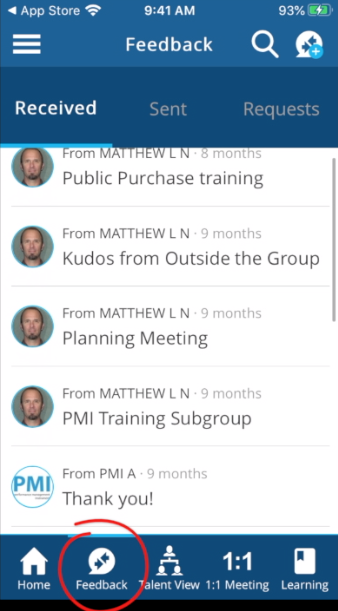 You can also look at your feedback that you have received or sent by clicking on the feedback icon in the lower menu. These are the received, and then sent, and then you can also look at ones that you have requested, if you ever requested any.
You can also look at your feedback that you have received or sent by clicking on the feedback icon in the lower menu. These are the received, and then sent, and then you can also look at ones that you have requested, if you ever requested any. So that’s talent view. Next let’s look at one-to-one meeting. So in one-to-one meeting basically it shows the agenda that you’re setting up. These are the agenda items that are automatically put into your one-to-one meeting… any feedback goes in there automatically. You can add an agenda item by clicking on the plus icon to the right of agenda. You can type in the title, describe the agenda item, and add it to your agenda. I’m going to discard that because I’m not making one right now. So that’s a nice way to keep things up to date for your next one-to-one meeting.
So that’s talent view. Next let’s look at one-to-one meeting. So in one-to-one meeting basically it shows the agenda that you’re setting up. These are the agenda items that are automatically put into your one-to-one meeting… any feedback goes in there automatically. You can add an agenda item by clicking on the plus icon to the right of agenda. You can type in the title, describe the agenda item, and add it to your agenda. I’m going to discard that because I’m not making one right now. So that’s a nice way to keep things up to date for your next one-to-one meeting.
